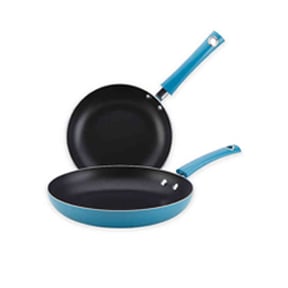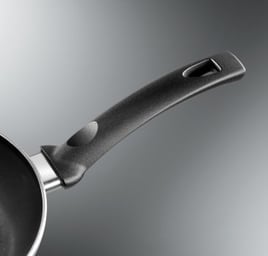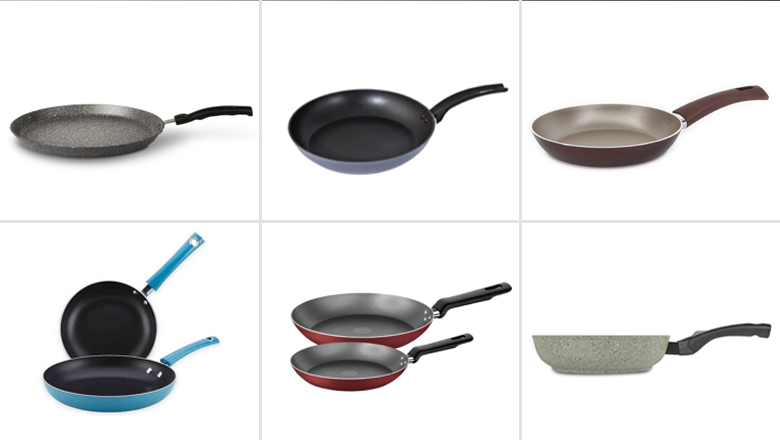More than one method may be used for fixing a cookware handle to pots and pans. The fixing system has a major impact on the safety and performance of the final product. No matter which level of the market you are trying to attract (budget, mid-range or luxury), consumers will always be interested in safety as a selling feature. Choosing the right one is a crucial part of developing a long-lasting cookware collection.
In this blog post, we will discuss the most common available options and the advantages of each one.
Cookware Fixing Methods
Riveted Cookware Handles:
 It is possible to use a riveted handle on product lines ranging from the most budget-friendly types up to the highest luxury brands. The difference is in using different types of accessories and consequently, of brackets. For the lower-priced product lines, you can use iron brackets both with two or three rivets (but always remember to have a special treatment to guarantee protection against rust!). These kind of brackets can have different design and technology ranging from open top to a closed one around the handle frontal part depending on the desired look and positioning. Moving at the higher end of the price range, thicker and wider brackets are used, mostly in stainless steel and with two big and strong rivets to sustain a heavier cookware body. Brackets also play an important role in defining product design, especially for higher end products, and they can be customized with customer’s logo.
It is possible to use a riveted handle on product lines ranging from the most budget-friendly types up to the highest luxury brands. The difference is in using different types of accessories and consequently, of brackets. For the lower-priced product lines, you can use iron brackets both with two or three rivets (but always remember to have a special treatment to guarantee protection against rust!). These kind of brackets can have different design and technology ranging from open top to a closed one around the handle frontal part depending on the desired look and positioning. Moving at the higher end of the price range, thicker and wider brackets are used, mostly in stainless steel and with two big and strong rivets to sustain a heavier cookware body. Brackets also play an important role in defining product design, especially for higher end products, and they can be customized with customer’s logo.
When it comes to riveted cookware handles, one of newest F.B.M solutions is handle 260 that stands out thanks to its customizable design and closed bracket, which is a patented innovative fixing system that upgrades the handle to a superior premium quality product among the first lines riveting handles. The connection bracket is in galvanized iron, which means that it is subject to a special treatment according to F.B.M. quality standards that ensures long time resistance and protection against rust. This process makes it very durable and the handle can be washed in the dishwasher.
Cookware Handles with Stud Flameguard:

This option is commonly used for welded handles, even if the inner part may be riveted, too. The handle or side handle is fixed on a stud by a screw and this connection part is protected by a flameguard. A handle flameguard is a special metal ring that has a key function in guaranteeing the mechanical strength and resistance of the finished product. Moreover it protects from the flame coming from stove hob to reach the handle and it also dissipates the heat. Flameguards can be made from aluminum or steel and have also an essential role in characterizing the design of a handle or side-handle.They can even be personalized with a logo and coated in color. Note that enamel cookware requires a special type of bracket due to its unique coating system.
F.B.M has multiple solutions when it comes to cookware handles with fmaleguards. Among them there are the newest handles EDRA, ROCKET, NIKA, ALFA and CHEF. All of them use a wide design flame guard, engineered with the user’s safety in mind. It is wide enough to protect from flames and heat and it gives strength and solidity to the product.
Detachable Cookware Handles:
A detachable handle is a fixing solution that is removable from the product by the consumer himself. You can find a variety of detachable systems in the market; important features to consider are the ease of use by the consumer and the safety.
F.B.M. solutions for detachable cookware handles successfully combines technology and design. The SUPER set of detachable handles for example is extremely intuitive, just push a button at the top of the handle. The detaching option offers the consumer the benefits of stovetop to oven cooking, easy dishwasher cleaning and efficient storage. Another example is handle FORTE, a patented handle system with a detaching button that can be personalized in color. This handle detaches easily with one hand, allowing the user to place the pot directly into the oven. Clamps are another option for removable handle cookware.
Handle Fixing Methods About More than Safety
When considering the different types of fixing methods, it’s important to look at factors such as safety. A handle must be safe for the consumer. The European Standard EN 12983_1/2 and the CMA in the USA, require specific tests to be conducted to evaluate the quality of the fixing system and its mechanical resistance. You can find more information about this here here.
On top of safety and quality, the choice of the fixing system often comes down also to one of aesthetics: is there a preference for the rivets to be visible or not? The decision is often made based on the customs and preferences of the particular cookware market. Preferences also varies from country to country, according to consumers' taste.
F.B.M. is an international manufacturer of cookware handles and pans. We can produce all types of accessories as described in detail in this post, as well as provide consulting, design and custom services to our valued clients. Contact us today to discuss how we can help you.




